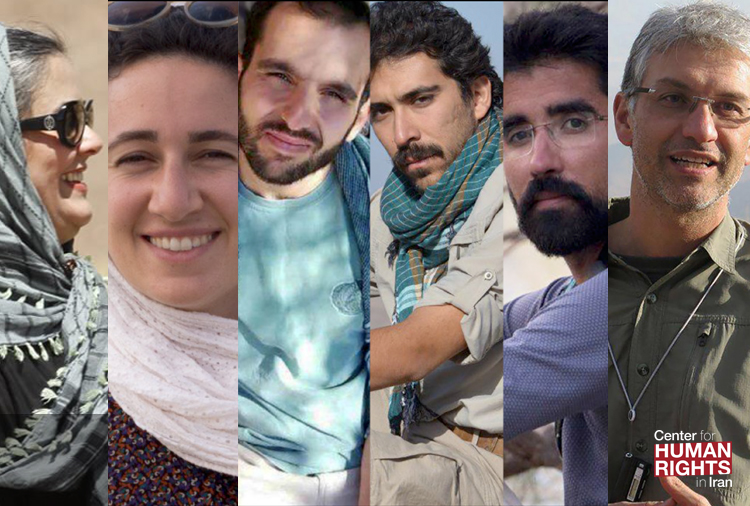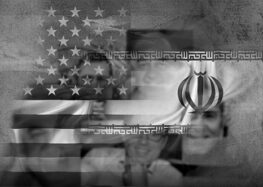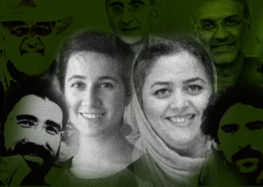800 Iranian Environmentalists Call on President Rouhani to Uphold the Rights of Detained Colleagues
 Detainees’ Families Still Seeking Answers More Than Three Months Into Loved Ones’ Arrests
Detainees’ Families Still Seeking Answers More Than Three Months Into Loved Ones’ Arrests
President Hassan Rouhani has not responded to a letter by 800 Iranian environmentalists demanding clarification on the “fate” of fellow environments who have been detained in Iran with extremely limited access to counsel for the past three to four months.
“As you are aware, it has been close to 90 days since 13 environmental experts and wildlife activists were detained by security agencies in Iran amidst the broadcast and publication of several unsubstantiated and questionable television and newspaper reports,” said the environmentalists in a letter sent to the president on April 2, 2018.
They continued: “As environmental experts, professionals, researchers and supporters we the undersigned, while demanding expedited judicial procedures to clarify the fate of the detainees, bare witness that during the 20 years of the latter’s professional efforts in the service of the homeland and the environment, we have witnessed no suspicious activities.”
In January 2018, current and former staff members of the Persian Heritage Wildlife Foundation (PHWF) were arrested by the Islamic Revolutionary Guard Corps including Kavous Seyed-Emami, Sam Rajabi, Niloufar Bayani, Morad Tahbaz (also holds American citizenship), Amir Hossein Khaleghi, Taher Ghadirian, Houman Jowkar and Sepideh Kashani.
One month later, six other environmentalists were arrested in the southern Iranian port city of Bandar Abbas: Morteza Arianejad, Hassan Ragh, Abdolreza Kouhpayeh, Alireza Farhadzadeh and Aref and Hassan Zare (brothers).
Security agents at Evin Prison declared Seyed-Emami, an Iranian Canadian academic and the PHWF’s managing director, dead to his wife on February 9, 2018. Judiciary spokesman Gholamhossein Mohseni Ejei publicly claimed on February 15 that Seyed-Emami had committed suicide before the release of the final autopsy report.
Two days earlier, on February 13, Tehran Prosecutor Abbas Jafari Dowlatabadi had accused Seyed-Emami and his detained colleagues of spying for US and Israeli intelligence agencies and passing on information about Iranian missile sites without providing substantiating evidence.
Seyed-Emami’s grieving widow, Maryam Mombeini, has been banned from leaving Iran since March.
The Iranian government has also ignored calls by Seyed-Emami’s family and UN officials for an independent investigation into his death.
Two lawyers representing the Seyed-Emami family previously debunked the allegations of espionage that were aired on Iran’s state-funded TV on February 13, the day Seyed-Emami was buried.
Attorneys Arash Keykhosravi and Payam Derafshan said the accusations were made “with no credible evidence” in order to “undermine the reputation of this national treasure.”
Families Struggle to Find Answers About Detained Loved Ones
The families of the remaining detainees have meanwhile experienced extreme difficulties getting in touch with their loved ones, who continue to be held without official charges or trial.
On May 7, Niloufar Bayani, Alireza Farhadzadeh and Sam Rajabi had meetings with their families that lasted only 10-15 minutes in the presence of security officials, the Center for Human Rights in Iran (CHRI) has learned. Bayani appeared to be very distressed, according to a source close to the family.
Rajabi’s mother, Lili Houshmand, told CHRI that she was not allowed to talk to her son about any legal issues or the charges against him. She was also informed that Rajabi would not be able to consult with his lawyer until the start of his trial.
“Taher Ghadirian’s mother was able to see him on May 1,” said the source who requested anonymity due to the sensitivities in Iran around speaking to foreign media outlets. “She was told she could only hold his hand and was not even allowed to kiss him. She tried to kiss him and they took her out and didn’t allow her to see him.”
Mirhessan Khaleghi, the brother of detainee Amir-Hossein Khaleghi, tweeted on May 7 that his brother was accidentally seen in prison by other family members and appeared relatively healthy but that he had not been allowed family visits.
“The detainees’ families have gone to the relevant agencies numerous times to make inquiries but so far they have not been given any clear answers about the charges against them or where they are being held,” said the environmentalists in their letter to the president.
It continued: “Some of the detainees have had at least one short meeting or phone contact with their families but there has been no contact from Abdolreza Kouhpayeh, and the fate of Hassan Ragh, Aref Zare and Hassan Zare remains shrouded in ambiguity… and they have been denied their right to a lawyer in blatant violation of Article 35 of the Constitution.”
The environmentalists also noted that the detainees were only doing their jobs as advocates and protectors of the environment and had been “encouraged” to do so by Supreme Leader Ali Khamenei.
“It’s amazing that all the rightful activities of the Iranian environmental community… have been labeled as suspicious and criminal, even though they are an intrinsic part of every environmental organization’s work backed by Article 50 of the Constitution and encouraged by the great leader of the revolution on numerous occasions,” the letter said.
According to the opposition news site Kalame, the environmentalists were targeted by the IRGC for opposing the installation of missile sites on protected lands.
“Kalame has received information that the environmental activists are not spies but in fact had resisted the IRGC’s excessive demands to encroach on environmentally protected regions for the installation of missile sites,” Kalame reported on April 16.
The report continued: “Although these regions were registered in the United Nations as protected areas, the IRGC thought it could build military sites there without any problem, thus it went ahead with installing missile silos and equipment. The move met opposition from environmental groups that repeatedly asked the IRGC to evacuate. The groups made it clear that the IRGC was endangering their activities to collect information and take photos of animals and plants for the UN. But the IRGC did not agree and asked these groups to instead submit old photos in their annual reports to the UN. The conflict between the two sides went on for years and eventually the IRGC’s Intelligence Organization used espionage as an excuse to arrest the environmentalists so that it could continue its activities in the protected regions without any problem.”






